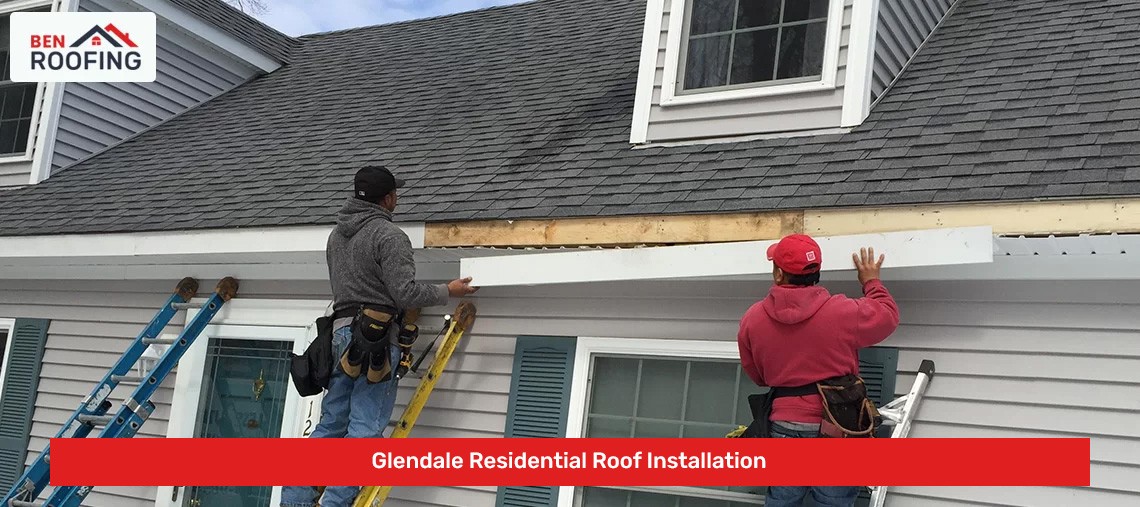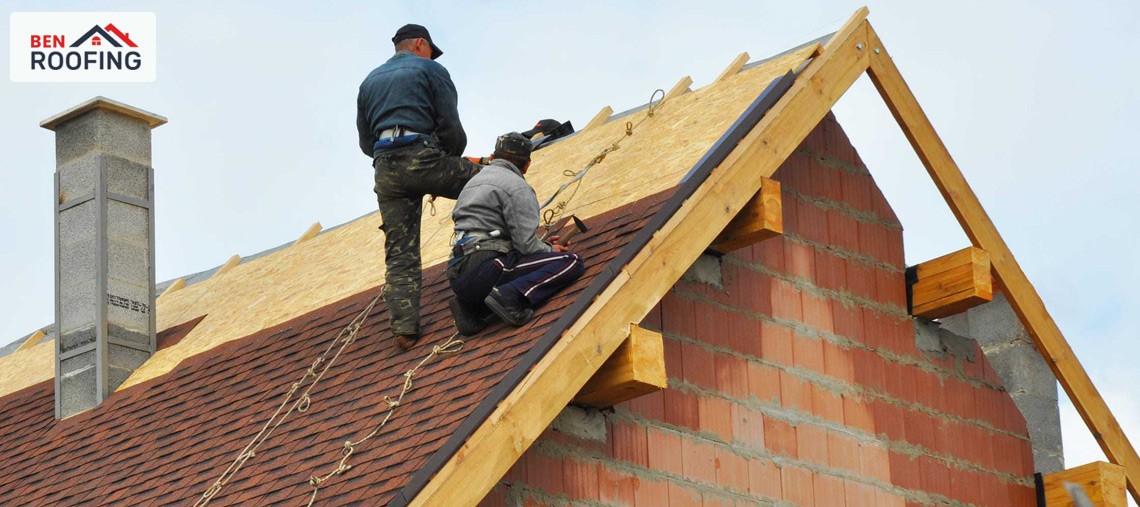Here are some of the factors that you should consider when planning for Glendale Residential Roof Installation

Roof Pitch: The slope or pitch of the roof affects its water runoff capabilities and determines suitable roofing materials. Glendale’s climate, with occasional heavy rainstorms, may require a steeper roof pitch to prevent water pooling and ensure efficient drainage.
Material Selection: Choose roofing materials that can withstand Glendale’s climate, including the hot summers and the potential for heavy rainfall. Consider factors such as durability, resistance to UV rays, fire resistance, and thermal insulation properties.
Ventilation: Proper ventilation is essential to regulate temperature and moisture levels within the attic space. In Glendale’s hot climate, adequate ventilation helps prevent the accumulation of heat and moisture, which can impact the longevity of the roof and the energy efficiency of the building.
Roof Color: The color of the roof can impact energy efficiency. Light-colored or reflective roofing materials can help reflect sunlight, reducing heat absorption and cooling costs during Glendale’s hot summers.
Drainage System: Proper gutter and downspout design and installation are crucial for effective water management. Considering Glendale’s occasional heavy rainstorms, a well-designed drainage system ensures water is directed away from the foundation and prevents water damage.
Building Codes and Permits: Ensure compliance with local building codes and obtain any necessary permits for roof installation in Glendale. These regulations may specify requirements for fire resistance, wind uplift resistance, and other structural considerations.
| Roof Installation Service | Description |
| Asphalt Shingle Installation | Installation of asphalt shingles, a popular and cost-effective roofing material. Provides durability, versatility, and various style options. |
| Metal Roof Installation | Installation of metal roofing panels, known for their longevity, durability, and energy efficiency. Ideal for various architectural styles. |
| Tile Roof Installation | Installation of clay or concrete tiles, offering a distinctive and aesthetically appealing look. Provides durability and weather resistance. |
| Wood Shake Roof Installation | Installation of wooden shakes or shingles, providing a natural and rustic appearance. Offers good insulation and can last for many years with proper maintenance. |
| Slate Roof Installation | Installation of slate tiles, known for their elegance, durability, and longevity. Offers a unique and upscale look, but requires professional expertise due to the heavy weight of the material. |
| Composite Roof Installation | Installation of composite roofing materials, such as synthetic slate or composite shingles, which mimic the appearance of natural materials while providing enhanced durability and longevity. |
Here are some of the steps taken during planning for your Glendale Roof Installation project:
Here are some of the different techniques Ben Roofing uses during Glendale Residential Roof Installation

In some cases, it is possible to install a new roof over the existing one, which is known as a “roof overlay” or “roof recover.” However, it is generally recommended to remove the old roof before installing a new one. Removing the old roof allows for a thorough inspection of the roof deck and ensures a proper installation.
Regular maintenance is essential to prolong the lifespan of your new roof. This includes keeping the roof clean, removing debris, inspecting for any signs of damage, and addressing any issues promptly. It is also recommended to schedule periodic professional inspections and maintenance to ensure the roof remains in good condition.
There are several ways to improve the energy efficiency of your roof. Consider using reflective roofing materials that can reflect sunlight and reduce heat absorption. Adequate insulation in the attic can also help in maintaining comfortable indoor temperatures. Additionally, proper roof ventilation can improve airflow and prevent heat buildup in the attic space.